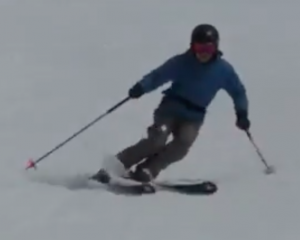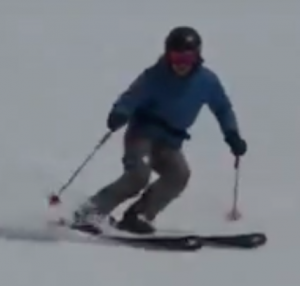@karlo, how about some definitions of terms.
Toppling usually refers to what the CoM does when it is released from circular travel and continues on its pathway due to momentum, unimpeded. This usually happens when a skier shortens the old outside leg by flexing its joints. People may disagree on what happens at the ankle dorsiflexion-wise when discussing this issue. You don't have to ankle-tip to the little toe edge when shortening that leg.
Pushing (some prefer the term
projecting) the CoM over the skis by extending the new outside leg does end up moving the CoM in a similar direction as toppling, but that trajectory starts out different. It's a muscular projection of the CoM to a high point over the outside ski whereupon it is released, and at that point the projected movement of the CoM blends with its momentum.
Toppling and pushing feel different, look different, and produce different underfoot pressures through the top half of the turn.
Toppling happens when one flexes to release.
Pushing happens when one extends to release.
Toppling allows the underfoot pressure to progressively grow until apex. The new outside ski will
engage at the top of the turn as it tips onto new edges because the new inside ski has been lightened by the flexion. That inside ski may even be partly off the snow. The skier may
float, very light, at the instant of release.
Pushing works more like skating. The new outside ski gets more initial underfoot pressure compared to toppling because of the leg's extension. The new outside ski will
engage at the top of the turn as it tips onto new edges.
Engage in its strictest sense means the edged ski grips the snow to effectively generate the turn shape the skier desires.
Edgeset (closely paraphrased from Bob Barnes' Complete Encyclopedia of Skiing) is a sudden engagement of the edge of a ski produced by sinking or collapsing and quickly pressuring and edging the outside ski. It produces rebound as the ski grabs, with minimal skidding, little grinding sound, and little snow flying. It is charateristic of slalom or short-swing turns where the idea of "quick on-and-off the edges" describes the movement well.



